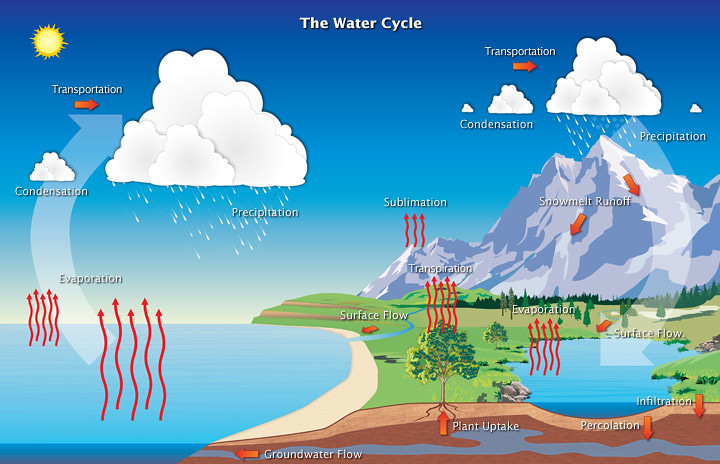The digestive system is responsible for breaking down food and absorbing the vitamins, minerals, fats, proteins, and carbohydrates. In the mouth, food is broken into smaller pieces, and the digestion of carbohydrates begins. Then food is swallowed, and is moved to the stomach in a process called peristalsis. While people usually think of the stomach when thinking of digestion, most of the digestion occurs in the first part of the small intestine called the duodenum. The small intestine is also where absorption occurs. The intestines are covered in small structures called villi, which absorb nutrients. The lining of the small intestine is folded to increase surface area and maximize the amount of villi. The villi are covered in microvilli, which also absorb nutrients. The large intestine absorbs water and gets rid of solid waste. Your digestive system is full of bacteria, which help to digest food and ferment indigestible food.
 |
| The duodenum |
The nervous system is what sends signals all over your body. The two different parts of the nervous system are the central nervous system (CNS) and peripheral nervous system (PNS). The central nervous system is made of your brain and spine, and the peripheral nervous system is made of the nerves that spread throughout your body. There are four different parts of the brain. The cerebrum controls thoughts, movement, and emotion. The deincephalon works with the endocrine system and sends information to the cerebrum. The cerebellum controls subconscious thoughts, determines body position, and calculates force of muscle movements. The spinal cord receives impulses from sensory neurons and sends signals to motor neurons. Neurons are specialized cells for sending and receiving signals. Sensory neurons carry signals from sensory organs like eyes, ears, and nose. Internuerons carry information from sensory neurons to motor neurons. Motor neurons send signals from the CNS to muscles and glands.
The endocrine system is like the nervous system, because it is used to send signals to other parts of the body, but the endocrine system does it more slowly and has longer lasting signals. Different glands in the body release hormones into the bloodstream, which cause changes to certain cells in the body. Some of the important glands are the hypothalamus gland, which links the pituitary gland and the nervous system. The pituitary gland controls the other glands. The thyroid gland absorbs iodine and regulates growth. On the thyroid gland are the parathyroids, which regulate calcium levels. The adrenal gland releases epinephrine, which controls the "fight or flight" response. The pancreas releases both insulin and glucagon to control blood sugar levels.
The circulatory and respiratory systems work together to bring oxygen to all the cells in the body so that they can perform cellular respiration and create energy in the form of ATP for the body. The diaphragm is the muscle that causes the lungs to expand and contract, which controls breathing. The oxygen inhaled diffuses into the bloodstream at the alveoli, and carbon dioxide also diffuses out of the bloodstream to be exhaled. Oxygenated blood flows through arteries, and when it is low in oxygen it flows through veins. Blood flows through the body, and then returns to the heart through two veins, the superior and inferior vena cava. Blood goes from the right atrium to the right ventricle, and then goes through the pulmonary artery to the lungs where it gets oxygen. The blood comes back in the pulmonary vein to the left atrium, then it goes to the left ventricle, and leaves for the rest of the body in the aorta.
 |
| The alveoli, where oxygen and carbon dioxide diffuse in and out of the capillaries |
The final system we learned about is the lymph system, and inflammatory response. The lymph system collects waste and blood from tissues all over the body. The lymph nodes also create white blood cells when you get sick. The inflammatory response is how a body responds to pathogens, and is part of the innate immunity. The different types of inflammation are acute inflammation, which occurs at a single spot where a pathogen is, and systemic inflammation, which occurs throughout the whole body. In the small intestine, if things other than digested food get through the intestinal wall, it can cause systemic inflammation. Chronic systemic inflammation is when the body is constantly doing systemic inflammation, and makes it harder for the immune system to do its job.
Overall, this unit was easy to understand, and probably one of my favorites. If at all, I'll spend most of my time reviewing the lymph and endocrine systems. Other than that, I understand all the organs we learned about.
I'm sorry to disappoint the two people who actually read this blog, but this is going to be my final post, because the school year is about to come to a close. If this is your first time reading this blog, check out my best work here and here. I'm glad I got the chance to share my work with anyone who had to learn the same stuff, or who was just interested in it, and I hope enjoyed reading it.















